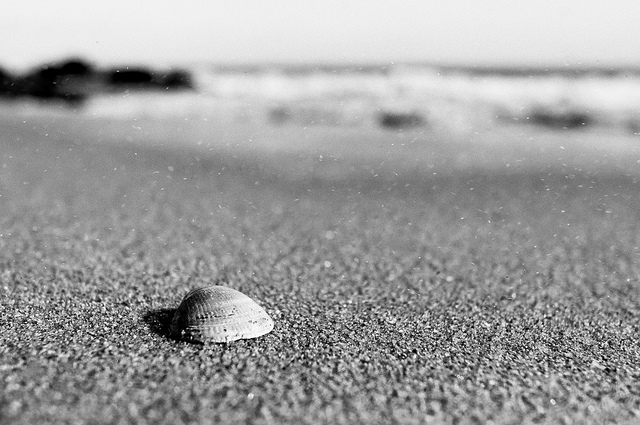Suicide looks very different when you’re the visitor.
The beeping of machines echo hauntingly in my head.
Even now, pacing around, uncomfortable in the insulation of mood and distance, I cannot beckon home the heartbeat I left at my friend’s hospital bedside two months ago, shadowed by depression’s cloud.
My dear friend, once one of the most beautiful souls I had ever met, has changed now, faded with street drugs and crime which have dulled her splendor.
She had all the grace of a radiant star, forced to fall too soon by the wretched pull of pain’s gravity. She lost so much of herself after that suicide attempt, and though she survived, we lost each other.
This is a plea to those considering suicide: hold tight to recovery. It is what I wish my friend had considered.
Do not be stars fallen too fast, too soon. Don’t give in to the darkness. I swear there will be a dawn.
I burnt my friend CDs and I brought her some of her things when I got the call from the hospital: Her favorite shea butter oil, sweatpants and People Magazine, which was all she could stand to read on the drugs they pumped into her. Bagfuls of belongings were toted in to try to make the sterile room more of a home. But we all know that a hospital bed is not home, and there is no changing that.
I’ve learned that with gritted teeth myself, and in seeing my dear friend try to find rest in the same wheezing beds of needles and saline drips as I have pricked my own armor.
It was bizarre to be the one who got to leave, to not be locked in the ward.
It was uncanny to have the liberty to pick up my things, savor a hug with my loved one, and move out to the fantastic and terrifying world which sends so many people in as patients. I didn’t know she would emerge forever different, and if I had, I would have tried to love her into holding on.
I would have sat longer with her through the darkness, rallied harder with her in this fight. Had I known the choices she was weighing, I would have thrown my full weight against the scale to make her stay true to herself.
I have learned we can rarely make someone stay, even if they are physically here, and I have had to learn to let go.
Stepping into the sunlight from my job today, much like I did from her ICU room only two months ago, I realized with painful acuteness that life is a prayer of brokenness and hope. I watched ambulances drive by two months ago, knowing nothing about who was held inside the gurney’s cradle, but still aching for them. And today, I watched the mall bustle around me with shiny bags full of things to try to fill the holes in ourselves.
I don’t have a magic answer for how to fill our aches; I know only that the bough does not need to break so soon.
Hold on.
I know that to live, rather than just survive, we must learn to reinforce each other with our heart strings and love-wrinkled hands; to cup the music of our heartbeats into seashells so that when we feel we are drowning, all we need to do is listen.
My friend was my heartbeat holder, and losing her to a battle with drug abuse and self-destruction has left my shell painfully empty. My doctor said that I have to learn to swim well enough on my own before I can save someone else from drowning, and I have found that he is right.
I am learning, slowly, to swim.
The suicide attempt of my friend rocked my world, and losing her despite her physical survival has gutted me. If I had known the ICU was not the real struggle, I would have spent many more hours on the phone with her than I already did. I would have asked her to put down the drugs and sharps and hold on to my hand instead. If I could, I would have been the dawn to her darkness.
Losing her has thrown pebbles at long-boarded windows in my chest, begging for honesty, begging for transparency to let the light both out and in. By writing this, I am reaching out to the part of you which may be considering drowning and offering to help you swim. I am holding your hand, just as I would have held my friend’s.
Please stay with me.
I never wanted to see what the ICU looks like as a visitor. I never wanted to fully realize that the despair that I chew over coffee is not just my own, and that it expands further than the plexiglass confines of psych wards. I didn’t want to face death outside of my own terms, and I never wanted to say goodbye. I wanted her to choose to swim, but I could not convince her that recovery is as beautiful as it truly is. It is worth it, even if that is hard to see.
When I saw my friend, her hair plastered to her forehead like stamps on a weary passport, I knew I had to write again. I’ve been horribly confined in the composition of my own fragile rebuilding that I have forgotten the very tools I need: Writing and sharing hope.
Seeing my friend recovering in the ICU with strength and fragility, and then casting it away with theft and drugs reminded me of humanity’s need to fill more shells with heartbeats—to teach each other to swim.
My friend did not complete her suicide attempt. She got emergency help and survived, against great odds. But part of her was lost.
Her face didn’t light up the same way. She found solace in needles and destruction instead of sharing coffees and laughter. She betrayed my trust, and I lost her. It can be hard to feel whole after a loss like that, when you think the person you fought for survived the midnight hour only to discover they were not who you thought they were. I miss her still, and hope that one day she will learn to swim.
My friend taught me a difficult lesson. I am remembering it now, decorated in scars and rolling the word “manic” around my tongue. It is a time when I deeply want a best friend, and hear only the faint beep of her hospital machines in my head instead. Pain is fresh in my veins, and I could use a best friend.
However, the one I lost taught me something powerful in her absence: the difference between surviving and recovering from suicide.
The lucky will survive, but it takes true grit to recover.
It takes a daily battle to stay afloat for many people, and a conscious decision to doggy paddle awkwardly, if necessary, as long as it means we keep from drowning. It is learning to meet life on its terms again, and accepting swimming lessons from doctors and friends.
Recovery is rarely graceful, and we may swallow some water, but the point is that we don’t drown. We don’t let the darkness take us under. We learn to let ourselves be taught to swim, practice, fail, try again. We don’t drown. Even if we must tread water, we don’t give up.
Suicide and life seem mutually exclusive to many, but I have found it to be otherwise.
Had I never relied on saline and styrofoam coffee, I don’t believe I would be who I am today. No, I know that I would not. I would not be able to relate to people as deeply, to offer out my seashell and say “Listen, there is hope here, even now.”
And I think after enticing death, I am much more able to enfold the glories of life into my cracks and make beauty from the brokenness. Because I have turned slowly from death to life, because I am faultily learning to swim, I can know that it can be one of the hardest decisions to make, and the most precious.
Life is beautiful, even if the sea is rough.
Tonight, remembering my friend breathing only with the help of machines, I will remember to breathe life’s prayer.
My shell is still rounding out, but with her suicide attempt and subsequent decomposition throwing pebbles at my heart, I must remember I have reason. I struggle to conquer in a sea shared by many: one of madness and beauty.
My brain has tried to kill me many times, and my recovery has been at times tenuous and harrowing. Writing has offered an anchor for me. It is my seashell heartbeat to share.
We all have reason, we just have to figure it out and keep sharing our heartbeats. We need to teach each other to swim. No one can do this alone. Our walks of life may be different, but tsunamis don’t discriminate.
So to anyone who is hurting, here is my seashell: It whispers, “Listen, there is still hope here.”
Swim. I will share this sea with you.
Put my seashell to your ear, and don’t ever let go.
*
Relephant:
The Other Side of Suicide
Love elephant and want to go steady?
Sign up for our (curated) daily and weekly newsletters!
Author: Emily Taggart
Editor: Emily Bartran
Photo: Thomas Leth-Olsen/Flickr












Read 12 comments and reply